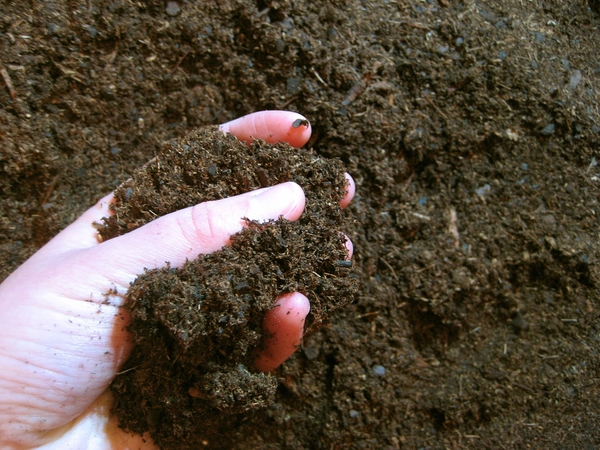Understanding Soils
go.ncsu.edu/readext?934914
en Español / em Português
El inglés es el idioma de control de esta página. En la medida en que haya algún conflicto entre la traducción al inglés y la traducción, el inglés prevalece.
Al hacer clic en el enlace de traducción se activa un servicio de traducción gratuito para convertir la página al español. Al igual que con cualquier traducción por Internet, la conversión no es sensible al contexto y puede que no traduzca el texto en su significado original. NC State Extension no garantiza la exactitud del texto traducido. Por favor, tenga en cuenta que algunas aplicaciones y/o servicios pueden no funcionar como se espera cuando se traducen.
Português
Inglês é o idioma de controle desta página. Na medida que haja algum conflito entre o texto original em Inglês e a tradução, o Inglês prevalece.
Ao clicar no link de tradução, um serviço gratuito de tradução será ativado para converter a página para o Português. Como em qualquer tradução pela internet, a conversão não é sensivel ao contexto e pode não ocorrer a tradução para o significado orginal. O serviço de Extensão da Carolina do Norte (NC State Extension) não garante a exatidão do texto traduzido. Por favor, observe que algumas funções ou serviços podem não funcionar como esperado após a tradução.
English
English is the controlling language of this page. To the extent there is any conflict between the English text and the translation, English controls.
Clicking on the translation link activates a free translation service to convert the page to Spanish. As with any Internet translation, the conversion is not context-sensitive and may not translate the text to its original meaning. NC State Extension does not guarantee the accuracy of the translated text. Please note that some applications and/or services may not function as expected when translated.
Collapse ▲Written by Brenda F., Chatham Master Gardener Volunteer
Gardeners talk a lot about soil. Let’s take a dive into the science of soil.
What is soil?
Soil scientists define soil as a living, dynamic, resource at the surface of the earth. Soil is made up of four different components – minerals, organic matter (both living and dead), water, and air. Different ratios of these components as well as where these components came from and the conditions the soil endures creates different kinds of soils. These differences determine how a soil looks, feels, and functions.
What is dirt?
Dirt is soil in places where it should not be, like under your fingernails, just like weeds are plants that are in the wrong place.
What is the difference between soil and compost?
Soil is made from three general sources of material. This material, also known as parent material, is made up of organic materials (such as decomposed plant and animal matter), residual materials (such as broken-down bedrock), and transported materials that are left behind by wind, water, or glaciers. Compost is decomposed organic material, which is only one type of parent material.
How are soils classified?
Scientists like to compare what is alike and different and organize this information. Elements are organized into the periodic table. This table allows you to determine the properties of each element, such as whether it is a metal or gas, if it is flammable, and how reactive it can be. Plants are divided into Kingdom, Division, Class, Order, Family, Genus, and Species. Gardeners most commonly use the genus and species groups, which are the Latin names found on helpful gardening tags. Similarly, soils are organized by Order, Suborder, Great Group, Subgroup, Family, and Series. The most useful of these for the average person would be Order and Series.
What does Soil Order refer to?
Soil orders are the broad features of soils. All soil on earth is divided into 12 soil orders.
- Alfisol – moderately weathered, clay, slightly acidic, found in forests
- Andisol – formed in volcanic materials and has specific mineral properties
- Aridisol – found in dry regions with accumulations of salt, carbonates, or gypsum
- Entisol – young, undeveloped soils with few horizons
- Gelisol – has permafrost
- Histosol – has Organic or O horizons
- Inceptisol – weakly developed, no clay
- Mollisol – dark-colored minerals, non-acid, found in prairies
- Oxisol – has lots of iron and aluminum oxides, found in tropical areas
- Spodosol – sandy with organic matter, aluminum, and/or iron, found under conifers
- Ultisol – highly weathered, acidic, clay, common in NC
- Vertisol – has lots of clay that dramatically shrinks and swells
North Carolina has small pockets of Alfisol, Entisol, Histosol, Inceptisol, Mollisol, and Spodosol. But most of North Carolina is made up of Ultisol.
What does Soil Series refer to?
Soil series is the common name of each specific type of soil. It is like calling a Solanum lycopersicum a tomato. There are over 400 different soil series in North Carolina, over 17,000 in the United States, and over 30,000 worldwide. In 1997, the Cecil soil series was named the state soil of North Carolina by the NC Legislature.
How do I find out the soil series at my house?
Soil scientists have mapped most of the soils found in the US. Soil map data used to be printed in books for each county. The data can now be found at the US Soil Survey. There is also a Soil Web app available for iOS and Android that will give you information about the soil under your feet.
How do soil scientists determine which series soil belongs to?
Generally, soil scientists look at the physical, chemical, and biological properties of soil.
- Physical – texture, structure, consistency, color, and horizons
- Chemical – nutrients, pH
- Biological – organisms
What is soil texture?
Soil texture is the size of the soil particles which are classified as clay, silt, or sand. Sand is the biggest particle and a single particle can be seen with the naked eye. When you rub sand between your fingers, it most likely feels gritty. Silt is smaller than sand and individual pieces cannot be seen without a microscope. If you rub it between your fingers, it will feel like flour. Clay is the smallest soil particle of all. You need an electron microscope to see individual particles. When wet, it feels slick and slimy between your fingers.
What is soil structure?
The structure of soil is how the particles of soil are arranged. Both the particles and the space around the particles are important in soil structure. If a sand particle was the size of a large exercise ball, a silt particle would be the size of a ping pong ball, and a clay particle would be the size of a grain of uncooked rice. If you filled a container with each of these items, you would find much more space between the exercise balls than between the grains of rice. This is why sand allows water to move through it quickly (lots of space) and clay drains water slowly (small amount of space). Soil with good structure will allow water to move through the soil at a pace that is slow enough not to wash away the soil but fast enough so that it doesn’t become waterlogged for days on end. Soil structure can be changed by adding organic matter (compost) to the soil. Compost helps sandy soils hold water longer and clay soils drain faster, in part by changing the amount of space around the soil particles.
What is soil consistency?
Soil consistency describes how well the soil holds together, how easily it changes shape, and how sticky it is. Soil scientists use the terms rupture resistance, plasticity, and stickiness.
If you moisten a handful of the soil, does it hold together or crumble? The better it holds together, the higher the rupture resistance. If you take a ball of soil and roll it between the palms of your hands to make the clay look like a pencil, how long can you make it? The longer the “stick” of soil, the more plastic the soil is. If you take some of the wet soil between your first finger and thumb and pull your fingers apart slowly, does the soil stay as one piece, like well chewed gum, or does it separate? The more the soil is like gum, the stickier it is. Clay soil is high in rupture resistance, plasticity, and stickiness.
What is soil color?
Have you noticed that soil can be red, brown, grey, yellow, black, white, or somewhere in between? Soil scientists use the Munsell Soil Color Book to determine the hue (color), value (lightness and darkness of color), and chroma (how strong the color is) of soil to analyze the characteristics of soil. Soil color can be an indicator of the presence or absence of certain minerals. While the average gardener does not need to know the exact hue, chroma, and value of their soil, it can be helpful to know that mottled gray soil may be a sign of poor drainage.
What are soil horizons?
Soil will change characteristics as you go deeper into the earth. If you dig a 5-foot-deep hole in your yard, you most likely would be able to see color differences and layers or horizons of soil. Different areas of your own yard can have different layers of soil. Soil scientists have a bit of shorthand that names each of the horizons – O, A, E, B, C, R.
O stands for Organic and not all soils have this layer. You are more likely to see this layer where there is a lot of organic material on the earth in various stages of decomposition, such as in a forest full of leaves.
A is what is typically referred to as topsoil. This is the layer where most plants grow their roots and has more fertility than the layers underneath. When builders remove the topsoil from a site, they are removing the soil that most plants need to survive.
E stands for Eluvial and is usually lighter in color than the A layer because water removes or leaches the minerals and nutrients out of this layer. If the topsoil has been removed, this is the layer you are trying to grow plants in and plants struggle because they cannot access the nutrients they need.
B or illivial horizon is the layer where the minerals and nutrients that have washed out of the E layer end up. It has less organic matter than the A layer and can have a lot of clay. If this soil is grey, it may spend much of its time underwater.
C is the layer of parent material, either in rock form or in broken down particles.
R is the Bedrock or solid rock that is never easily moved.
Why does soil pH matter?
Soil can be acidic or alkaline and this is measured in terms of pH. The pH scale ranges from 0-14. 7 is neutral. In general, plants like slightly acidic soil, or a pH of 6.5-7.0. This allows plants to access the largest range of nutrients in the soil. However, some plants thrive in soil that is more acidic, such as blueberries and azaleas. Some like more alkaline soils, like asparagus. Soil below 4.0 or above 10.0 will not support plant life.
In North Carolina, soils tend to naturally be acidic. Having your soil tested will tell you the pH of your soil and how to change it for the types of plants you want to grow. In NC, soil tests are free April- November. More information on how to conduct a soil test.
How long does it take to make soil?
In general, it takes between 50 -100 years for 1 inch of soil to be created.
For more information on soil, check out these resources:
Chapter 1 of the Extension Gardener Handbook
Know Soil Know Life, edited by David L. Lindbo, Deb A. Kozlowski, and Clay Robinson





